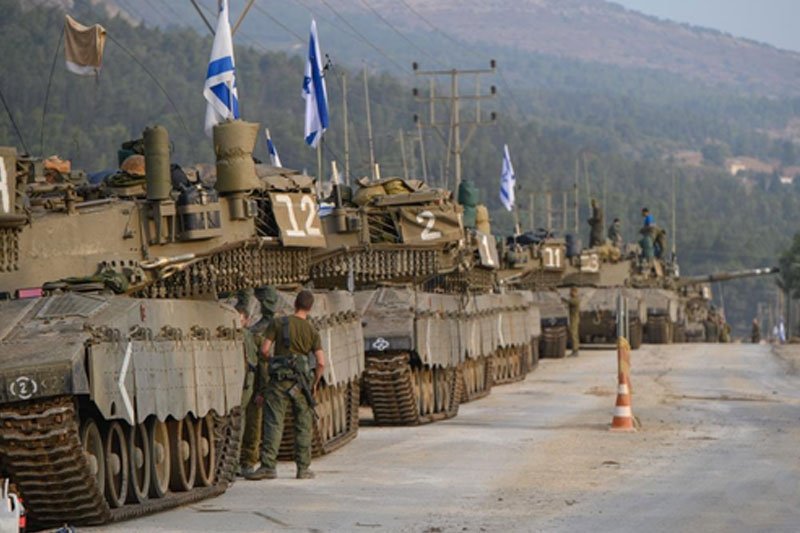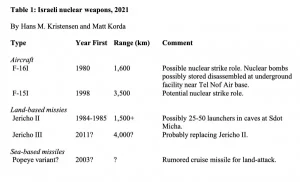The Bible tells us in the Book of Revelation that Armageddon is the place where the forces of evil will converge upon the people of God, with the intent of bringing about their destruction. It is the place of a final and conclusive battle between the forces of good and evil, and it will end with a world consumed by fire.
It is generally assumed Armageddon is somewhere in the Middle East—possibly Israel, Palestine, or Persia, today’s terrorist state of Iran.
Since the appalling and pitiless attack on Israel by the terrorist organization Hamas and Israel’s consequent promise to invade the Gaza Strip and annihilate Hamas, I have wondered if we are on the brink of Armageddon.

Let me explain why and offer you some numbers that will put all of this in context.
Israel is a nation of about nine million people. Currently, some 169,000 of them are on active duty in the Israeli Defense Forces (IDF). Another 465,000 are reservists, of which 360,000 have been called up to augment the active IDF units. That means about 6 percent of Israel’s population has been mobilized to attack Hamas in the Gaza Strip.
Hamas, which has ruled the Gaza Strip since 2007, is thought to have anywhere from 10,000 to 40,000 fighters in Gaza, which has a population of 2.2 million.
Hezbollah, the Lebanese terrorist organization, is thought to have as many as 100,000 fighters in Lebanon arrayed along the northern border of Israel. As with Hamas, Hezbollah’s military hardware and weapons are mainly made in Iran, China, or Russia, and most have come to the group via Iran or Syria.
Iran, the nation that supports both Hamas and Hezbollah, has a population of some 66 million. Most importantly, the Iranian Armed Forces are the largest in the Middle East in terms of active troops. Iran’s military forces are made up of approximately 610,000 active-duty personnel plus 350,000 reserve and trained personnel that can be mobilized when needed, bringing the country’s military manpower close to one million total.
If Israel only has to deal with Hamas and even Hezbollah fighters, I think they would most likely prevail.

But what happens if Iran enters the fray? Suddenly, the calculus changes for Israel—and not for the good.
At that point, Israel faces the very real possibility of defeat, and the Jewish cry of “Never Again” that the world has heard since Jews were liberated from Nazi death camps in 1945, takes on new meaning.
Specifically, it means this: If Israel is pushed to the precipice of annihilation by the combined forces of Iran, Hamas, and Hezbollah, it will have no choice but to employ its nuclear arsenal.
Here’s where things get interesting. Israel has never admitted to having nuclear weapons and practices a policy of nuclear ambiguity. “Amimut,” as it is known, deliberately obscures whether Israel actually possesses nuclear weapons, according to the Bulletin of the Atomic Scientists, an independent, nonprofit organization that monitors the planet’s nuclear nations.
Since the mid-1960s, the Bulletin says, this policy has been publicly expressed—and recently reaffirmed by Prime Minister Benjamin Netanyahu—as the phrase “We won’t be the first to introduce nuclear weapons into the Middle East.”
Israeli policymakers have suggested that “introducing” nuclear weapons would necessarily require Israel to test, publicly declare or actually use its nuclear capability. Given that Israel has not officially done any of those things, the Israeli government can declare that it has not “introduced” nuclear weapons into the region despite the high likelihood that in reality, the country possesses a sizable nuclear arsenal.
So, what kind of nuclear arsenal are we talking about in Israel?

According to the Bulletin, estimates of Israel’s stockpile range between 90 and 400 nuclear warheads, and the country is believed to possess the ability to deliver them via several methods, including by aircraft, as submarine-launched cruise missiles, artillery, and via the Jericho series of intermediate to intercontinental range ballistic missiles.
Suddenly, Israel has the upper hand against Iran, which, as far as the world knows, has no nuclear weapons—though I wouldn’t bet my life on that.
The Bulletin of Atomic Scientists points out that the Israeli nuclear weapons program dates back to the mid-1950s, when the country’s first Prime Minister, David Ben Gurion, began to explore a nuclear insurance plan to offset the combined conventional superiority of Israel’s neighboring Arab states.
Ben Gurion tapped Shimon Peres––who would later become Israel’s prime minister––to lead Israel’s nuclear program, the Bulletin says. Under Peres’ stewardship, Israel purchased a substantial package, including a research reactor and plutonium separation technology, from France in 1957, as well as 20 tons of heavy water from Norway in 1959. The ground for the Negev Nuclear Research Center was broken near Dimona in early 1958.
The U.S. and much of Europe have since looked the other way regarding Israel’s nuclear weapons program.
The Bulletin points out that after the end of the Cold War, Israel began to fear that the United States’ tacit support for Israel’s undeclared nuclear arsenal would soon fade, given US support for a possible Middle East nuclear-weapon-free zone. As a result, Israel has reportedly requested that each American president since Bill Clinton sign a letter indicating that any future US arms control efforts would not affect Israel’s nuclear arsenal.
During a 2003 interview with the BBC, former Prime Minister Shimon Peres was asked:
“The term nuclear ambiguity, in some ways, sounds very grand, but isn’t it just a euphemism for deception?”
Peres did not answer the question but confirmed the need for deception: “If someone wants to kill you and you use deception to save your life, it’s not immoral. If we wouldn’t [sic] have enemies, we wouldn’t need deceptions”
There have been three distinct incidents during which Israel reportedly came close to “introducing” nuclear weapons to the region under its own narrow definition. The first instance was during the Six-Day War in June 1967.
The second instance reportedly came during the October 1973 Yom Kippur War, when Israeli leaders feared that Syria was about to defeat the Israeli army in the Golan Heights. Several unidentified former US officials allegedly stated in 2002 that Israel put nuclear forces on alert in 1973.
The third potential instance of near-introduction came six years later, on September 22, 1979, when a US surveillance satellite detected what appeared to be a double flash from a nuclear test in the southern part of the Indian Ocean. The prevailing US belief at the time was that the flash was the result of an Israeli nuclear test, possibly with South African logistical support. That incident was never conclusively confirmed.
The Bulletin of Atomic Scientists points out that during the past several decades, news media reports, think tanks, authors, and analysts have presented a wide range of possibilities for the size of the Israeli nuclear stockpile, from 90 warheads to more than 400 warheads. Delivery vehicles for the warheads have been listed as aircraft, ballistic missiles, tactical or battlefield weapons such as artillery shells, landmines, and, more recently, sea-launched cruise missiles.

“We believe that many of these rumors are inaccurate and that the most credible stockpile number is less than one hundred warheads, probably on the order of 90 warheads for delivery by aircraft, land-based ballistic missiles, and possibly sea-based cruise missiles,” The Bulletin reported recently.
Would Israel dare unleash these nuclear weapons?
Faced with certain defeat by enemies whose professed goal is the annihilation of Israel and the extermination of all Jews, why wouldn’t they?
Wouldn’t the United States, if faced with an attack from China or Russia?
While the use of tactical and perhaps a couple of strategic nuclear weapons would no doubt create a localized Armageddon in the Middle East, a nuclear war involving the U.S., China, and Russia would no doubt result in an “End of Days” event from which humans might never recover.
At that point, the Biblical warning from the Lord of Hosts contained in Malachi 4:1, would seem to ring true:
“For behold, the day is coming, burning like a furnace, when all the arrogant and every evildoer will be stubble; the day is coming when I will set them ablaze. Not a root or branch will be left to them.”
Sounds like Armageddon to me.
–30–
If you enjoyed this post, please consider subscribing to ForeignCorrespondent and tell your friends to subscribe. IT’S FREE! WHAT A DEAL! If you’ve received this from a friend and would like to be added to our distribution list for future blog posts, please enter your email address in the sign-up for notifications box at https://ronaldyatesbooks.com/category/foreign-correspondent.
You can also find my commentaries on Substack at https://ronyates.substack.com/ and the American Free News Network at https://afnn.us.
Please feel free to comment. WE LOVE COMMENTS!
There are 3.6 million Israels between the ages of 19 and 50—the normal military age.


The timing of this is interesting because my daughter just asked me about the end times last night. We are in a wicked, polarizing era.
My nephew is engaged to a Jordanian. She and her mother are very pro-Palestinian. They have both been angered by my unwavering stance with Israel, and they have asked me to stop writing my views on the situation. I told them that I am writing about facts. Hamas is a terrorist organization.
Something tells me that I will not be welcome at the wedding.